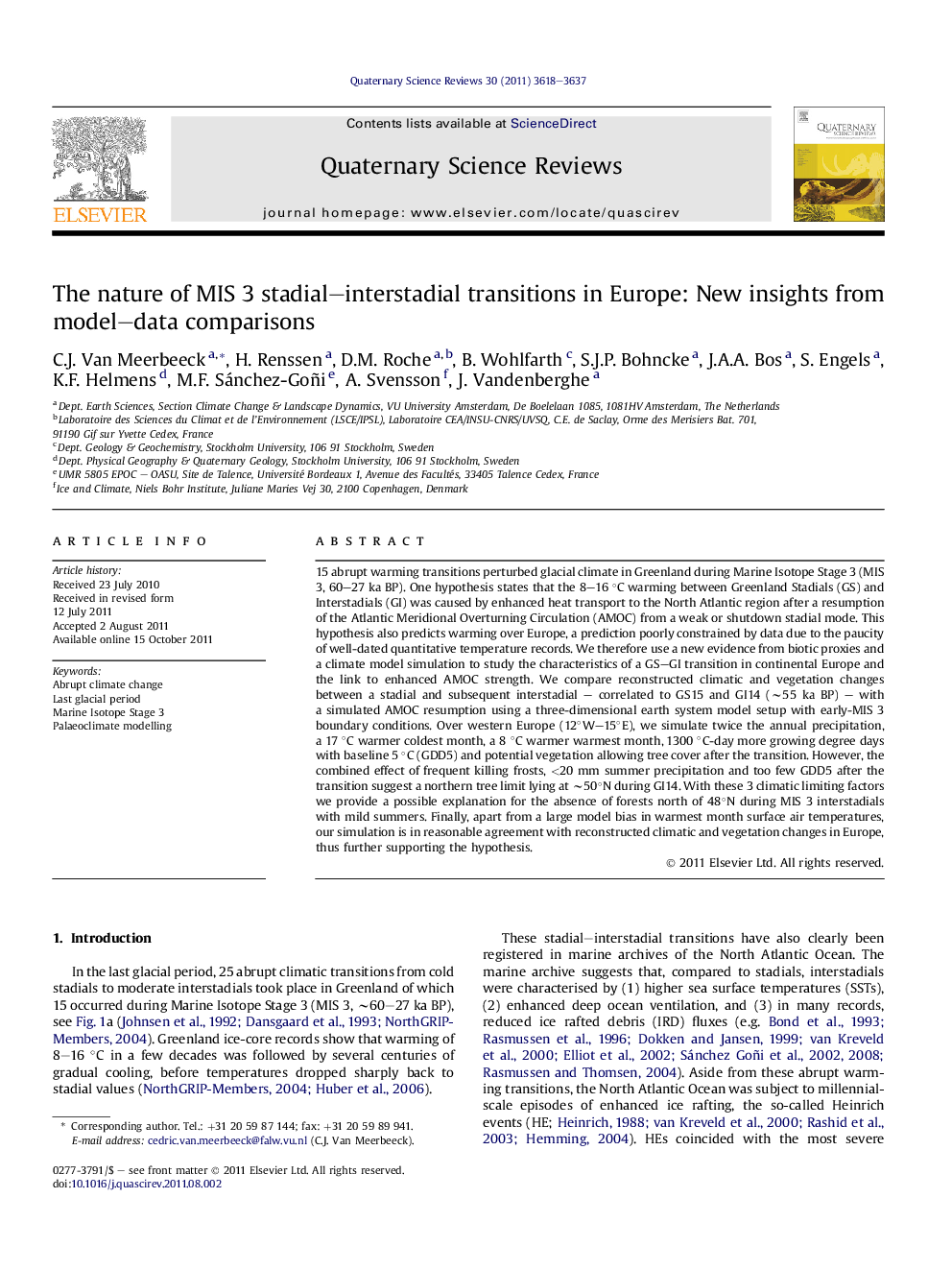| کد مقاله | کد نشریه | سال انتشار | مقاله انگلیسی | نسخه تمام متن |
|---|---|---|---|---|
| 4736527 | 1640905 | 2011 | 20 صفحه PDF | دانلود رایگان |

15 abrupt warming transitions perturbed glacial climate in Greenland during Marine Isotope Stage 3 (MIS 3, 60–27 ka BP). One hypothesis states that the 8–16 °C warming between Greenland Stadials (GS) and Interstadials (GI) was caused by enhanced heat transport to the North Atlantic region after a resumption of the Atlantic Meridional Overturning Circulation (AMOC) from a weak or shutdown stadial mode. This hypothesis also predicts warming over Europe, a prediction poorly constrained by data due to the paucity of well-dated quantitative temperature records. We therefore use a new evidence from biotic proxies and a climate model simulation to study the characteristics of a GS–GI transition in continental Europe and the link to enhanced AMOC strength. We compare reconstructed climatic and vegetation changes between a stadial and subsequent interstadial – correlated to GS15 and GI14 (∼55 ka BP) – with a simulated AMOC resumption using a three-dimensional earth system model setup with early-MIS 3 boundary conditions. Over western Europe (12°W–15°E), we simulate twice the annual precipitation, a 17 °C warmer coldest month, a 8 °C warmer warmest month, 1300 °C-day more growing degree days with baseline 5 °C (GDD5) and potential vegetation allowing tree cover after the transition. However, the combined effect of frequent killing frosts, <20 mm summer precipitation and too few GDD5 after the transition suggest a northern tree limit lying at ∼50°N during GI14. With these 3 climatic limiting factors we provide a possible explanation for the absence of forests north of 48°N during MIS 3 interstadials with mild summers. Finally, apart from a large model bias in warmest month surface air temperatures, our simulation is in reasonable agreement with reconstructed climatic and vegetation changes in Europe, thus further supporting the hypothesis.
► Europe’s palaeorecord supports Thermohaline Circulation induced abrupt climate shifts.
► Abrupt warming in Europe characterised by warming and increasing precipitation.
► Northward forest expansion limited by summer drought, cold growing seasons and killing frosts.
Journal: Quaternary Science Reviews - Volume 30, Issues 25–26, December 2011, Pages 3618–3637